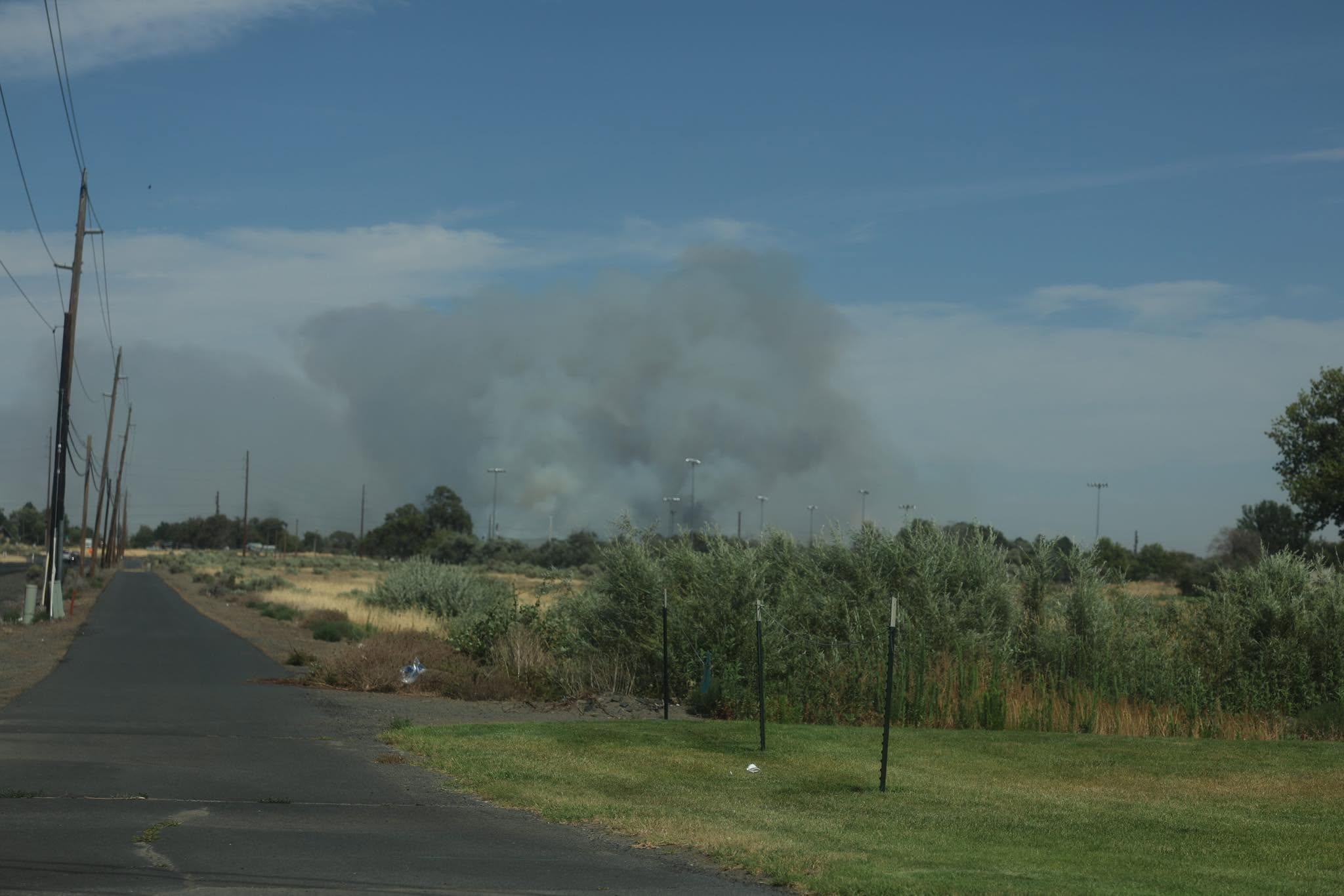Small schools, big money
Published 5:00 am Tuesday, September 5, 2023

- Science teacher Laura Orr gives instructions to her class in March 2019 about a tree identification book at the Ukiah School.
PENDLETON — Federal coronavirus pandemic funds from 2020-24 have benefited smaller school districts in Umatilla and Morrow counties with more than $3.8 million.
Jennifer Pambrun is the initiatives coordinator at the InterMountain Education Service District. She said districts have wide latitude to tailor their spending to meet their greatest needs.
“Yes, we know the pandemic and virtual learning set students back in terms of academic and social development,” Pambrun said. “However, without these investments in technology to support students and families during the closure, building infrastructure to improve health and safety when schools reopened and programming to accelerate learning after, it could have been so much worse. Better buildings and additional resources for kids — some would call that a silver lining.”
ESSER fundsThe money came from the Elementary and Secondary School Emergency Relief Fund through the passage of the federal Coronavirus Aid Relief and Economic Security Act in 2020 and the American Rescue Plan Act in 2021. Together the allocations came to approximately $189.5 billion for state educational departments to distribute to schools to address the impacts of the virus, focusing on programmatic and capital investments to accelerate learning and improve the health, safety and wellbeing of staff and students.
The federal government dispersed the money in titles I, II and III. ESSER funding provided Oregon with $114 million for Title I, $484 million for Title II and $1 billion for Title III — 90% of ESSER funds being directed toward districts and students while the remaining 10% is for state-level initiatives.
For Oregon, ESSER funding coincided with the state’s Student Success Act, and particularly the Student Investment Account, which districts had just begun implementing before the pandemic hit.
Student enrollment and the ratio of students in poverty according to 2020 census data determined the local allocations. Athena-Weston School District received $357,008 in Title II and $802,353 in Title III, Echo School District received $234,146 in Title II and $526,228 in Title III and Ione School District in Morrow County received $40,124 and $90,176.
The first title expired Sept. 30, 2022. The deadline for districts to claim ESSER II funds is Sept. 30. And schools have until Sept. 30, 2024, to spend Title III funding.
With the September 2023 and 2024 deadlines approaching, Pambrun said, districts had to make sustainable decisions to minimize the impact of the pending, inevitable fiscal cliff. School districts have been putting the federal ESSER funds and the state SIA funds to work the last few years and plan to for the next year, beating 2023 the 2024 deadlines before the federal money is no longer available.
Having access to state and federal streams of funding, Pambrun said, “opened up an opportunity for districts to leverage these funds for goals and projects previously unattainable.”
The situation was particularly advantageous for smaller districts, she said, which rarely receive enough, let alone be able to accumulate enough, funding for large capital expenditures.
Athena-WestonAthena-Weston School District Superintendent Ann Vescio said the district will claim all of its ESSER II before the Sept. 30 deadline and is on track to claim all of its ESSER III funds by the 2024 deadline.
During the 2019-20 school year, staff and community feedback expressed a desire to address students’ social-emotional needs, she said, and for a three year period the district hired student support staff, including a full time behavior support specialist, a licensed school counselor and a middle grades reading and writing intervention specialist.
“This student support team has been critical in helping out students to manage anxiety and depression stemming from the pandemic as well as to recover academically,” Vescio said. “Our current integrated guidance budget, which now includes SIA funding, maintains this support team moving forward.”
Vescio also said with ESSER funds the district was able to accomplish a number of improvements.
The district stabilized its ability to purchase 1 to 1 technology for students on a four-year renewal cycle; supported the purchase of high-quality, research-based math and language arts curriculum K-12; completed important heating, ventilating and air conditioning upgrades; created covered outdoor learning spaces; and supported an after-school enrichment program for students in grades four through eight as well as a robust summer enrichment program for elementary students.
The district will use remaining funds, Vescio said, for science curriculum adoption, summer enrichment programs in 2024 and another cycle of Chromebook replacements for students.
“Without a doubt,” she said, “both SIA and ESSER funds have opened opportunities for our students and community that were previously unavailable.”
StanfieldStanfield School District Superintendent Beth Burton said the first round of ESSER funds, back during distance learning, the district bought a lot of new technology, including Chromebooks, iPads, WiFi hotspots and webcams.
The district also has spent most of the ESSER II and III funds, more than $817,000 in all, and a good portion is helping the district finish its bus garage project.
“We decided to stop contracting for transportation and started a district-owned and operated transportation department,” Burton said. “The rules during COVID required cohorting and sanitizing and creatively scheduling transportation. The flexibility we gained by managing our own bus fleet has been worth it.”
In terms of additional staffing, Burton said, the district paid for a full-time nurse “once we saw what would be needed to manage contact tracing” and a roving sub “for two years to have someone on site every day that could fill in where needed.”
Professional development for staff that focuses on student engagement also has been a priority, she said.
The district used SIA funds in particular, Burton said, to increase staff and expand course offerings for students, such as art, horticulture, baking and robotics. She said the district is working on reviving its business career and technical education program and expanding agriculture course offerings in the classroom and in the wood and metal shops.
“We now have a behavior support specialist at the elementary school,” Burton said, “and we also have two dean of students positions, one in each school, to support student behavior and data tracking and attendance.”
The district also funded a no-cost kindergarten readiness program for 3- and 4-year olds and growth monitoring assessments for reading and math. Burton said the data from the assessments are “incredibly helpful for creating intervention plans and helping facilitate conversations about learning and progress with parents.”
She said the district has earmarked remaining funds for adoption of instructional materials each year until the funds expire, such as new English language arts, math and science curriculum.
“Stanfield has quite a bit of residential development that has been approved and will increase the population of the community once those units are constructed and available,” Burton said. “We are paying attention and working to be proactive so that our students get the very best we can offer now and in the future. Our facilities look amazing, and we have the best staff around. I am proud of the direction we are heading and the work we are doing.”
UkiahThe Ukiah School District received a total allocation of $142,571 in ESSER Title II and Title III funds. Superintendent Laura Orr said between ESSER and SIA the district has been able to invest in its building, staff and students in ways it could not have in the past.
The funding, Orr said, “allowed for Ukiah to make much needed improvements to our 100-year-old building,” such as replacing all the windows, installing split heating and air conditioning in all rooms, upgrading building furnaces and replacing old drinking fountains with bottle filling/drinking fountains.
Orr also said the district “invested in additional student curriculum, reestablished and expanded student programs, and provided time to our staff for planning, curriculum alignment, and professional development.”
Orr credited the Elementary and Secondary School Emergency Relief Fund and the state’s Student Investment Account for making positive impacts on the community, school and students.
The federal government provided school districts with coronavirus pandemic relief allocations through the Elementary and Secondary School Emergency Relief Fund. The disbursements came in separate waves — titles I, II and III.
The first title expired Sept. 30, 2022. The deadline for ESSER II funds is Sept. 30. And schools have until Sept. 30, 2024, to spend Title III funding.
The following is the amounts local small school districts received in ESSER II and III.
Athena-Weston
ESSER II — $357,008
ESSER III — $802,353
Echo
ESSER II — $234,146
ESSER III — $526,228
Helix
ESSER II — $53,008
ESSER III — $119,133
Ione
ESSER II — $40,124
ESSER III — $90,176
Pilot Rock
ESSER II — $202,584
ESSER III —$455,294
Stanfield
ESSER II — $251,687
ESSER III — $565,650
Ukiah
ESSER II — $43,871
ESSER III— $98,700
Source: Oregon ESSER Expenditure Transparency Dashboard at shorturl.at/kEKR9.









